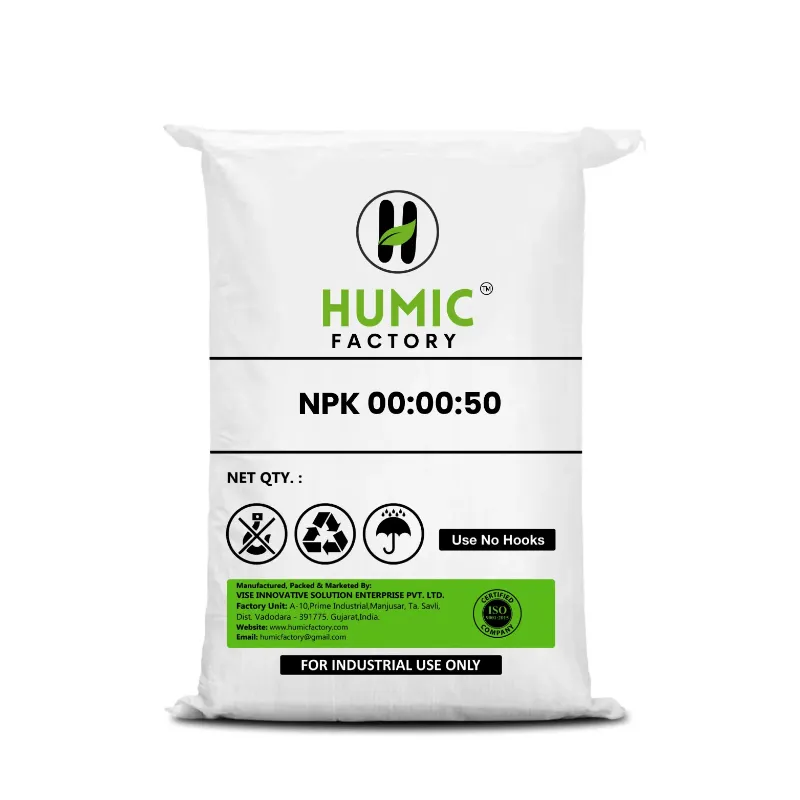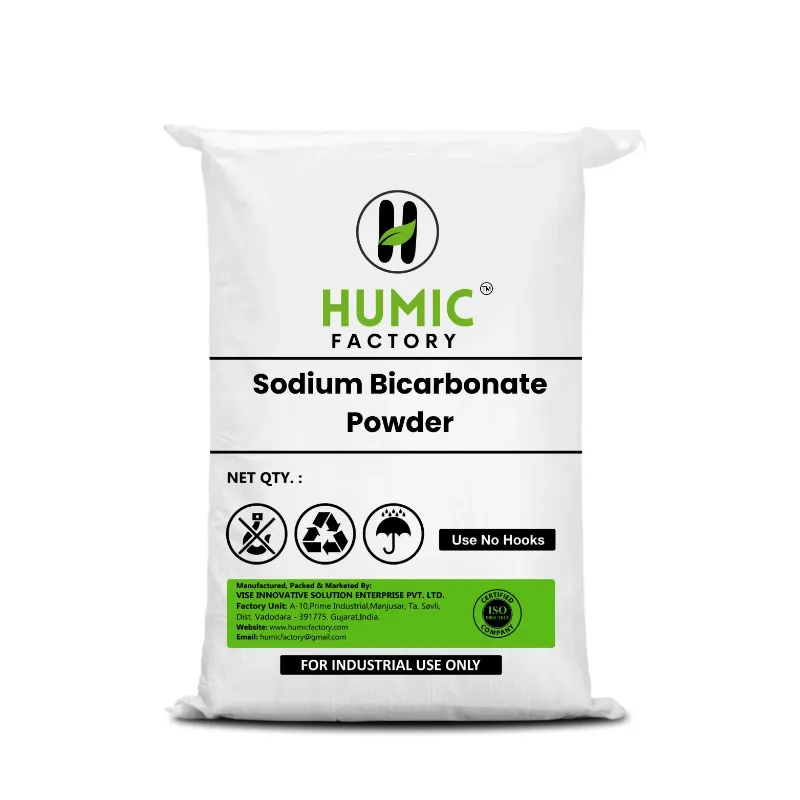Understanding the NPK for fruit and vegetable plants is the secret to achieving a bright, productive, and healthy vegetable garden. Regardless of whether you're growing leafy greens, root crops, or fruiting plants, NPK can support every development stage of vegetable growth.
From boosting colors of the leaves, to roots, to flowering, NPK for vegetables is vital for your vegetable garden success! Being able to differentiate what each vegetable is asking for ensures that the plants get a specific method of nutrition that actually works.
For example, potato fertilizer NPK tends not to have a high amount of nitrogen but do have higher phosphorus and potassium to help form tubers and disease tolerance. A tomato fertilizer NPK is askew to be more balanced more for support for flowering and fruiting while supporting a hardy stem and foliage making the whole plant strong.
As for vining plants ,the best NPK for cucumbers when comparing fertilizers, is to choose the NPK that favours flowering while the plant is fruiting as well, and not give the plants too much nitrogen.
Understanding NPK and Its Importance in Vegetable Gardening
NPK for vegetables is fundamental to a productive, healthy garden. Whether you a beginner or an established gardener, it is important to understand how NPK supports your vegetables in making better, more informed decisions in how to feed your plants.
What does NPK stand for and how it benefits vegetable crops
NPK is short for Nitrogen (N), Phosphorus (P), and Potassium (K) - the three nutrients that directly influence plant growth. Nitrogen feeds leafy growth, phosphorus supports roots and flowering, and potassium improves disease resistance and overall function. By having an appropriately balanced diet of these nutrients, vegetables grow faster, are healthier, and have better stress resistance.
For example, a good potato fertilizer NPK would promote phosphorus and potassium to advance tuber development and firmness. On the other hand, a purposeful tomato fertilizer NPK would account for consistent fruit-setting and foliage, as well as plant interactions with pest pressure and growing conditions.
The science behind NPK for vegetables and soil nutrition
Vegetables take up nutrients from the soil using their roots; it is the nutrients in the soil that determine the efficiency of the uptake mechanism. The inputs in NPK fertilizers you use, are to compensate for the nutrients you do not naturally have in the soil. This is especially helpful if you are in a performance growing environment and you are actively harvesting in an intensive manner and nutrients may not be contributed back into the soil very quickly.
Properly using the best NPK for cucumbers, will bring about flowering and fruit without saturating your soil with the nitrogen component. Too much of any one nutrient manifests itself in we: weak roots, poor results, or leaf burn.
NPK for vegetables should always be matched to the state of growth and condition of the soil, to optimize the chances of proper uptake, and realize the best possible production.
Why balanced NPK fertilizers are essential for healthy gardens
Balanced NPK fertilizers contain all three nutrients in equal or near equal proportions for a well-rounded support for plant development. These products are helpful when growing multiple crops in one plot, where all needs may be combined.
Using a balanced NPK supports root structure, stem girth, leaf emergence, and fruit size in the case of vegetables, regardless of type. The make-up of any NPK product means that you will get the necessary macronutrient inputs to grow leafy greens, tubers, or fruiting vegetables, provided that it can be taken up over the full heavy season growth period.
Gardeners will therefore be able to using a standard NPK for vegetables, improve soil health, improve reduction of waste, and have a plentiful harvest without the use of artificial inputs.
The Role of Each Nutrient in the NPK Formula
Understanding how each element in the NPK for vegetables formula works will key to produce a productive garden. Nitrogen, phosphorus, and potassium serve a purpose in order to plant health and development. Whether you are feeding leafy greens or root vegetables or fruiting crops such as tomatoes and cucumbers, where a ratio of NPK is used; proper ratio importance will be considered through the growing period.
Nitrogen: Promoting lush green leaves in vegetables
Leafy greens (vegetables) require nitrogen as their most significant nutrient. Nitrogen contributes to chlorophyll and protein production, which increases the extensiveness of leaf growth and overall development during the earliest stages of a plant's life.
Why nitrogen matters in vegetable gardens:
- Drives rapid leafy growth
- Supports productive stem and shoot growth
- Increases chlorophyll production (green) to improve plant health
For some crops:
- Leafy greens (ex: spinach, lettuce): Leafy greens also benefit from a higher level of nitrogen content.
- Potato fertilizer's (NPK) moderate nitrogen allows for good balance between a good leaf and tuber development.
- Tomato fertilizers (NPK) typically contain nitrogen and a ratio to support vegetative growth without impacting flowering.
Phosphorus: Vital for root growth and flowering
Phosphorus is essential for root growth and flower development. It aids energy transfer in plants, which is needed in early growth establishment and reproductive stages.
The advantages of phosphorus in vegetables:
- Building deep, healthy roots
- Improving flowering and fruit production
- Assisting in energy transfer and seed production
Best practices:
- Root vegetables like potatoes benefit from the phosphorus-rich potato fertilizer NPK.
- Tomato fertilizer NPK has phosphorus in it to enable lots of flowering and fruit set.
- Phosphorus is also necessary when transplanting young seedlings.
Potassium: Strengthening plant immunity and fruit quality
Potassium is crucial for the overall strength and productivity of your vegetables. It regulates water movement, strengthens plant cell walls, and enhances flavor and fruit quality.
Key functions of potassium:
- Improves disease resistance and plant immunity
- Enhances fruit size, taste, and shelf life=
- Regulates water uptake and stress tolerance
Where it’s most effective:
- Use the best NPK for cucumbers with a high potassium ratio to boost fruit quality and yield.
- Potassium is essential in tomato fertilizer NPK for consistent fruit production.
- It’s vital during fruiting stages to ensure well-formed, flavorful harvests.
Balanced potassium = healthier plants + better harvest.
Choosing the Right NPK Ratio for Different Vegetables
Not all vegetables require the same type of nutrition. The right NPK for vegetables depends on the type of crop you’re growing. Leafy greens, root vegetables, and fruit-bearing plants each thrive with a different balance of nitrogen (N), phosphorus (P), and potassium (K). Understanding how to match the NPK ratio with your vegetable’s needs can significantly boost yield, taste, and plant health.
Tomato fertilizer NPK: What tomato plants really need
Tomatoes are heavy feeders and go through distinct vegetative and fruiting stages, each with unique nutritional requirements. A well-balanced tomato fertilizer NPK ensures robust growth and high-quality fruits.
Ideal NPK ratio for tomatoes:
- Early growth: 10-10-10 to promote even development
- Flowering and fruiting: 5-10-10 or 8-24-24 to reduce foliage and support flower and fruit formation
Why it works:
- Nitrogen (N) supports stem and leaf growth early on
- Phosphorus (P) encourages deep root systems and strong flowering
- Potassium (K) improves fruit set, size, and disease resistance
Use a low-nitrogen, high-phosphorus tomato fertilizer NPK once the plant begins to flower.
Potato fertilizer NPK: Optimal nutrients for tuber development
Potatoes are root crops, which means they require different nutrition than leafy greens or fruiting vegetables. A specialized potato fertilizer NPK ensures healthy tuber growth and minimizes excessive leaf development.
Ideal NPK ratio for potatoes:
- 14-7-21 or 15-15-15 are commonly used to support tuber bulking
- Lower nitrogen helps the plant focus energy on root production rather than foliage
Why it matters:
- Phosphorus enhances root formation and early sprouting
- Potassium increases starch production and tuber size
- Balanced or slightly potassium-heavy NPK blends reduce disease risk and improve storage quality
For best results, start fertilizing 2–3 weeks after planting with a low-nitrogen potato fertilizer NPK formula.
Best NPK for cucumbers: Encouraging fruit growth and vine health
Cucumbers are fast-growing, vining plants that need steady feeding throughout the growing season. The best NPK for cucumbers supports strong vines, vibrant flowers, and plentiful fruit.
Ideal NPK ratio for cucumbers:
- 5-10-10, 10-10-10, or 8-16-36 are suitable options depending on growth stage
- Balanced or phosphorus-rich formulas work best when flowering starts
Key nutrient roles:
- Nitrogen supports early vine and leaf development
- Phosphorus boosts flowering and root growth
- Potassium ensures healthy fruit set and improves resistance to disease
Apply the best NPK for cucumbers regularly, especially during flowering and fruiting stages, to maintain steady productivity and strong vines.
How to Apply NPK Fertilizer Effectively in Your Vegetable Garden
Proper application of NPK fertilizers is essential for maximizing your vegetable garden's productivity. Whether you’re growing leafy greens, root crops, or fruit-bearing vegetables, learning how to read labels, test your soil, and apply the fertilizer correctly can make all the difference. Tailoring your approach using NPK for vegetables ensures each plant receives the nutrients it needs for every stage of growth.
How to read NPK labels and customize for vegetable types
Understanding NPK labels is the first step to choosing the right fertilizer. The three numbers on a package (e.g., 10-10-10) represent the percentage by weight of nitrogen (N), phosphorus (P), and potassium (K) respectively.
Tips for customizing NPK for vegetable types:
- Leafy vegetables (spinach, lettuce): Require more nitrogen. Choose an NPK like 12-6-6.
- Root vegetables (carrots, potatoes): Need more phosphorus and potassium. Use potato fertilizer NPK like 5-10-10.
- Fruiting vegetables (tomatoes, cucumbers): Thrive on higher phosphorus and potassium once flowering starts. Use tomato fertilizer NPK such as 8-24-24 or the best NPK for cucumbers, like 6-10-20.
Soil testing before applying NPK for vegetables
Before applying any fertilizer, conduct a soil test. This helps identify nutrient deficiencies and avoid over-fertilization.
Why soil testing matters:
- Reveals current nutrient levels in the soil
- Helps avoid nutrient toxicity or deficiency
- Guides your selection of the best NPK for vegetables
How to do it:
- Use a home test kit or send a sample to a local lab
- Test multiple areas of your garden for accuracy
- Re-test every season to monitor changes
For example, if your soil already has high nitrogen, skip high-nitrogen potato fertilizer NPK to avoid excessive leafy growth.
Application techniques: watering, top dressing, and foliar feeding
The method of application plays a key role in how well your vegetables absorb nutrients.
Three effective ways to apply NPK for vegetables:
- Watering (Liquid Application):
- Dissolve water-soluble fertilizer in water and pour at the plant base
- Ideal for quick nutrient uptake, especially for young plants
- Top Dressing (Granular Application):
- Sprinkle granules around the root zone and gently mix into the topsoil
- Best for slow and consistent nutrient release
- Foliar Feeding (Spray on Leaves):
- Dilute liquid fertilizer and spray directly on leaves
- Useful when plants show nutrient deficiency signs
For tomato fertilizer NPK, start with top dressing during early growth, followed by foliar feeding during flowering. For potato fertilizer NPK, top dressing works best to reach tuber zones. The best NPK for cucumbers may require a mix of watering and foliar spray as cucumbers grow fast and need regular feeding.
Avoiding Common Mistakes with NPK Fertilizers
Using NPK for vegetables can greatly enhance your garden’s productivity—but only if used correctly. Misapplication, overuse, or neglecting signs of deficiency can lead to stunted growth, poor yields, or even plant damage. This guide helps you understand common mistakes and how to avoid them when using tomato fertilizer NPK, potato fertilizer NPK, or choosing the best NPK for cucumbers.
Over-fertilization risks and how to prevent them
Over-fertilization is one of the most frequent mistakes made in vegetable gardening. Excess nutrients can lead to salt buildup in the soil, nutrient lockout, or even root burn.
Risks of over-fertilization:
- Leaf burn or yellowing (especially with nitrogen overdose)
- Delayed flowering or fruiting (plants stay leafy but don’t produce)
- Salt buildup in the root zone, which can damage roots
How to prevent it:
- Always follow label instructions for the fertilizer dose and dilution
- Use a soil test to determine what your garden actually needs
- Apply smaller doses more frequently instead of one heavy dose
- Use slow-release granules for longer-term nutrient supply
Correcting nutrient imbalances in vegetable plants
Imbalance in nutrients—such as too much nitrogen and not enough potassium—can throw off plant metabolism and growth. It's important to balance nutrients according to the plant’s needs.
Solutions for imbalance:
- Adjust the NPK ratio to match the plant type and stage of growth
- For fruiting crops like tomatoes or cucumbers, reduce nitrogen and increase potassium
- For leafy greens, maintain higher nitrogen levels
Recognizing deficiency symptoms in common vegetables
Identifying symptoms early allows you to fix problems before they hurt your yield. Below are key deficiency signs and how to address them using the right NPK for vegetables:
- Nitrogen Deficiency:
- Symptoms: Yellowing of older leaves, stunted growth
- Solution: Use high-nitrogen tomato fertilizer NPK like 12-6-6 for leafy boost
- Phosphorus Deficiency:
- Symptoms: Purplish tinge on leaves, poor root development
- Solution: Apply phosphorus-rich potato fertilizer NPK or 10-20-10 blends
- Potassium Deficiency:
- Symptoms: Leaf edges turn brown, weak fruit development
- Solution: Apply best NPK for cucumbers with extra potassium (e.g., 6-10-20)
Always observe your plants weekly. Consistent yellowing, poor flowering, or irregular growth could signal the need for adjustment in your fertilization approach.
The Environmental Impact of Using NPK Fertilizers Responsibly
While NPK for vegetables is essential for maximizing plant health and yield, how it is used plays a significant role in the health of the broader environment. Uncontrolled or excessive use of potato fertilizer NPK, tomato fertilizer NPK, or any synthetic NPK mix can contribute to water pollution, soil degradation, and ecological imbalance. Responsible application can help protect the environment while still supporting healthy vegetable growth.
Sustainable NPK usage in vegetable gardens
Sustainable gardening means using NPK fertilizers in a way that supports long-term soil health, reduces waste, and promotes a balanced ecosystem. This can be achieved through smart practices like precision fertilization and crop rotation.
Ways to use NPK for vegetables sustainably:
- Apply only the nutrients your soil needs, based on soil testing
- Choose slow-release NPK blends that feed plants over time
- Use targeted application near root zones to reduce waste
- Rotate crops to prevent nutrient depletion in the same soil
Reducing chemical runoff with organic or slow-release options
Chemical runoff is a serious concern when excess fertilizer washes into nearby water bodies. It can cause algal blooms, fish death, and ecosystem disruption. Using organic NPK or controlled-release NPK blends minimizes this risk.
Eco-friendly practices when using NPK for vegetables
Gardening with care benefits both plants and the planet. Eco-conscious use of NPK for vegetables doesn’t just protect the environment—it also improves soil fertility over time and reduces input costs.
Eco-friendly fertilization practices include:
- Use mulch: Reduces leaching and keeps moisture in the soil
- Compost first: Combine NPK with organic matter to improve structure
- Microdosing: Apply smaller quantities more frequently to reduce runoff
- Buffer zones: Keep NPK applications away from water sources
FAQs
Q1. What is the best NPK for vegetables like tomatoes and potatoes?
The best NPK for vegetables depends on the crop. Tomato fertilizer NPK often ranges from 5-10-10 or 10-10-10, while potato fertilizer NPK typically works best around 5-10-10 for tuber development.
Q2. Can I use the same NPK fertilizer for all vegetables?
No, different vegetables need different nutrient levels. NPK for vegetables like leafy greens, fruiting plants, and root crops vary, so it’s best to customize your mix.
Q3. How often should I apply NPK to my garden vegetables?
Apply NPK every 2–4 weeks based on the plant’s needs and the type of fertilizer (slow-release or liquid). For example, the best NPK for cucumbers may be applied every 2 weeks during flowering and fruiting.
Q4. Is organic NPK better than synthetic for vegetables?
Both can be effective. Organic NPK is better for long-term soil health, while synthetic offers faster results. Choose based on your gardening goals and soil condition.
Q5. What are signs that my vegetables need more NPK?
Common signs include yellowing leaves (nitrogen deficiency), poor root or flower growth (phosphorus), and weak stems or fruit issues (potassium). These indicate your vegetables may need more NPK support.
Conclusion: Transform Your Vegetable Garden with the Right NPK Strategy
Choosing the right NPK for vegetables is more than just picking a fertilizer—it's about understanding your plant’s needs and giving them the best possible chance to thrive. A balanced approach to fertilization ensures strong roots, healthy leaves, and abundant harvests, season after season.
Why choosing the correct NPK for vegetables maximizes growth
Whether you're growing leafy greens, root vegetables, or fruiting plants, using the correct NPK for vegetables delivers the essential nutrients that drive their growth. Nitrogen supports lush leaves, phosphorus develops strong roots, and potassium builds resilience and quality. When applied thoughtfully, the right NPK ratio maximizes plant health, yield, and taste.
How tailored NPK ratios for tomatoes, potatoes, and cucumbers improve yield
Every vegetable has its own unique needs.
- Tomato fertilizer NPK blends like 5-10-10 or 10-10-10 promote strong vines and flavorful fruits.
- Potato fertilizer NPK (commonly 5-10-10) helps encourage deeper root growth and larger tubers.
- The best NPK for cucumbers supports vine health and steady fruit development, often using a mix like 6-10-10.
By customizing NPK ratios for each crop, you give your garden a targeted nutrient boost right where it's needed most.
Balanced fertilization for long-term garden health and success
Beyond boosting yield in the short term, maintaining a balanced NPK regimen ensures your soil remains fertile for the future. Regular soil testing, crop rotation, and responsible application of NPK for vegetables (whether synthetic or organic) promote sustainable gardening. Thoughtful use of potato fertilizer NPK, tomato fertilizer NPK, and the best NPK for cucumbers helps your garden stay vibrant and productive year after year.





